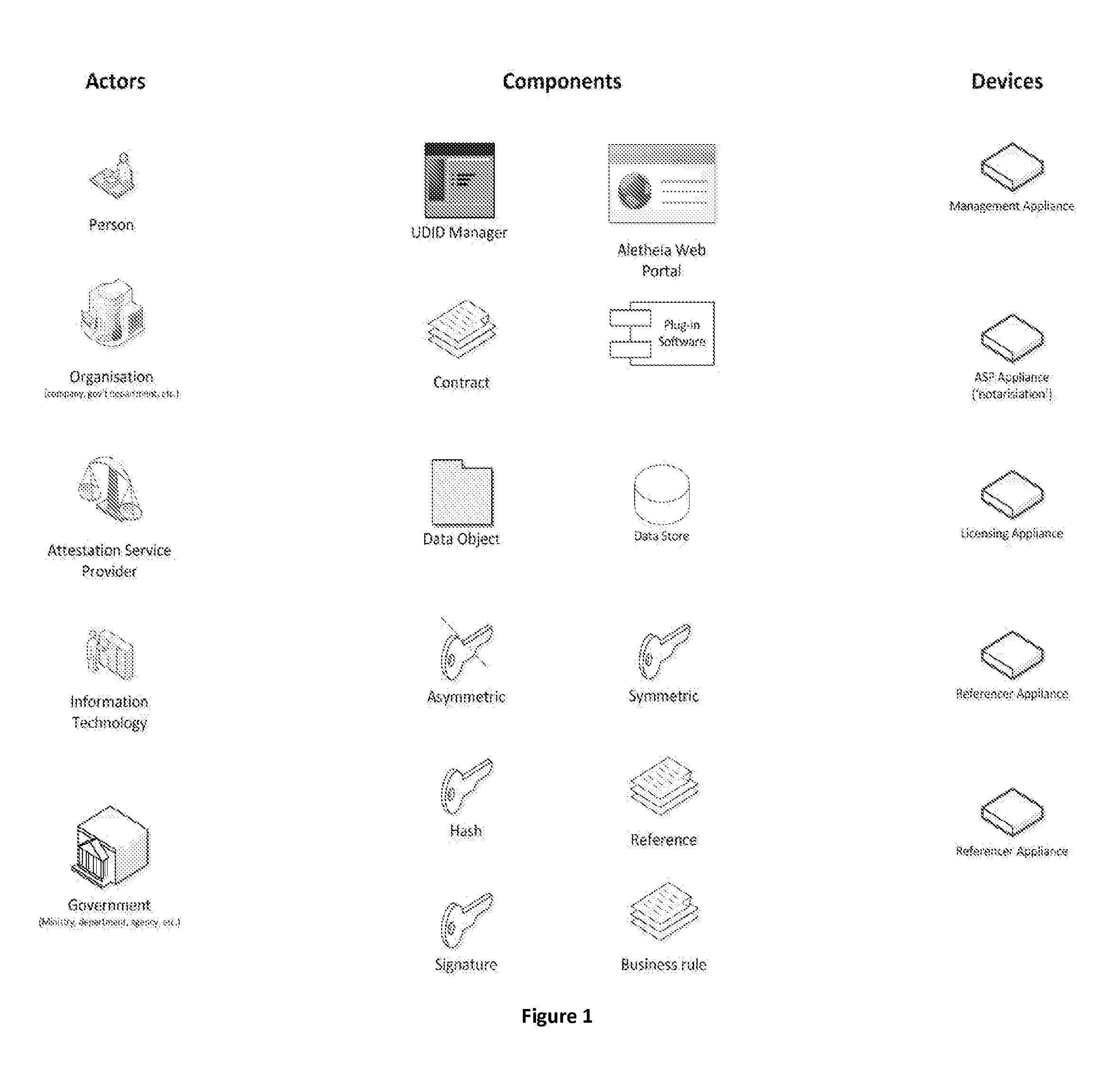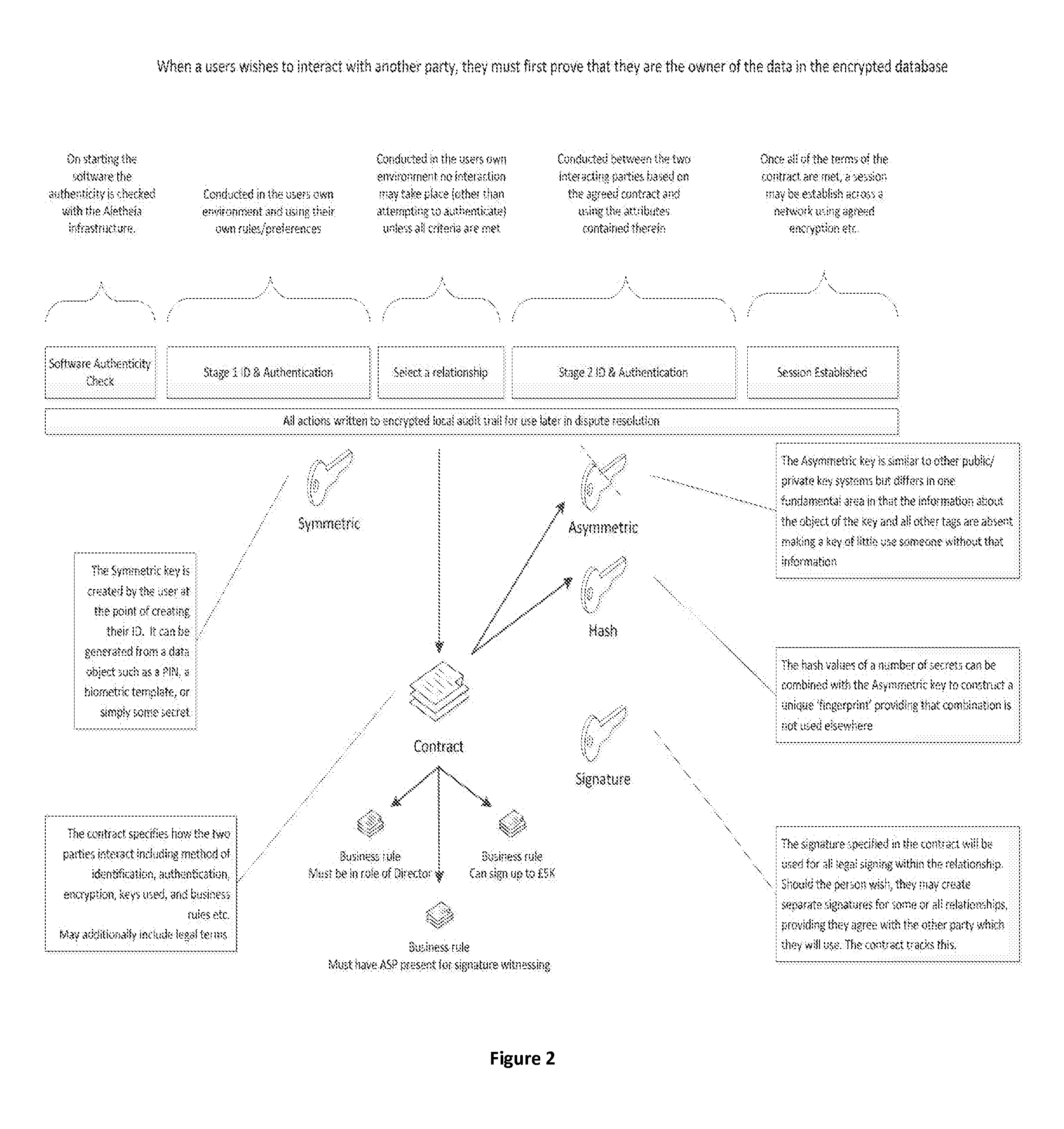Authentication in computer networks
a computer network and network authentication technology, applied in the field of computer network authentication, can solve the problems of deep flawed mechanisms in both design and execution, requiring more careful storage, and reducing the complexity of the authentication process, so as to reduce the need to write new software or the development of software to enhance or change the functionality of the software. or avoid the effect of reducing the complexity
- Summary
- Abstract
- Description
- Claims
- Application Information
AI Technical Summary
Benefits of technology
Problems solved by technology
Method used
Image
Examples
Embodiment Construction
[0137]Embodiments of the invention maintain security in computer networks by mimicking secure transactions which take place in the physical world, involving identifying and authenticating two parties to a transaction to the extent judged to be necessary having regard to the nature of the intended transactions, making an agreement or legally binding agreement, and then implementing secrecy or confidentiality measures during transactions. Embodiments address the issues of what is needed to operate digitally as in the physical world, where two parties interact with one another to make an agreement. In contrast prior procedures for security in computer network generally operate by imposing a global view on security considerations, to which all users have to conform, i.e. a server or hub-centric system. However such global systems have proved flawed, for example the Public Key Infrastructure (PKI). There are also many examples of simple mistakes, e.g. an encryption key being given to the...
PUM
 Login to View More
Login to View More Abstract
Description
Claims
Application Information
 Login to View More
Login to View More - R&D
- Intellectual Property
- Life Sciences
- Materials
- Tech Scout
- Unparalleled Data Quality
- Higher Quality Content
- 60% Fewer Hallucinations
Browse by: Latest US Patents, China's latest patents, Technical Efficacy Thesaurus, Application Domain, Technology Topic, Popular Technical Reports.
© 2025 PatSnap. All rights reserved.Legal|Privacy policy|Modern Slavery Act Transparency Statement|Sitemap|About US| Contact US: help@patsnap.com



